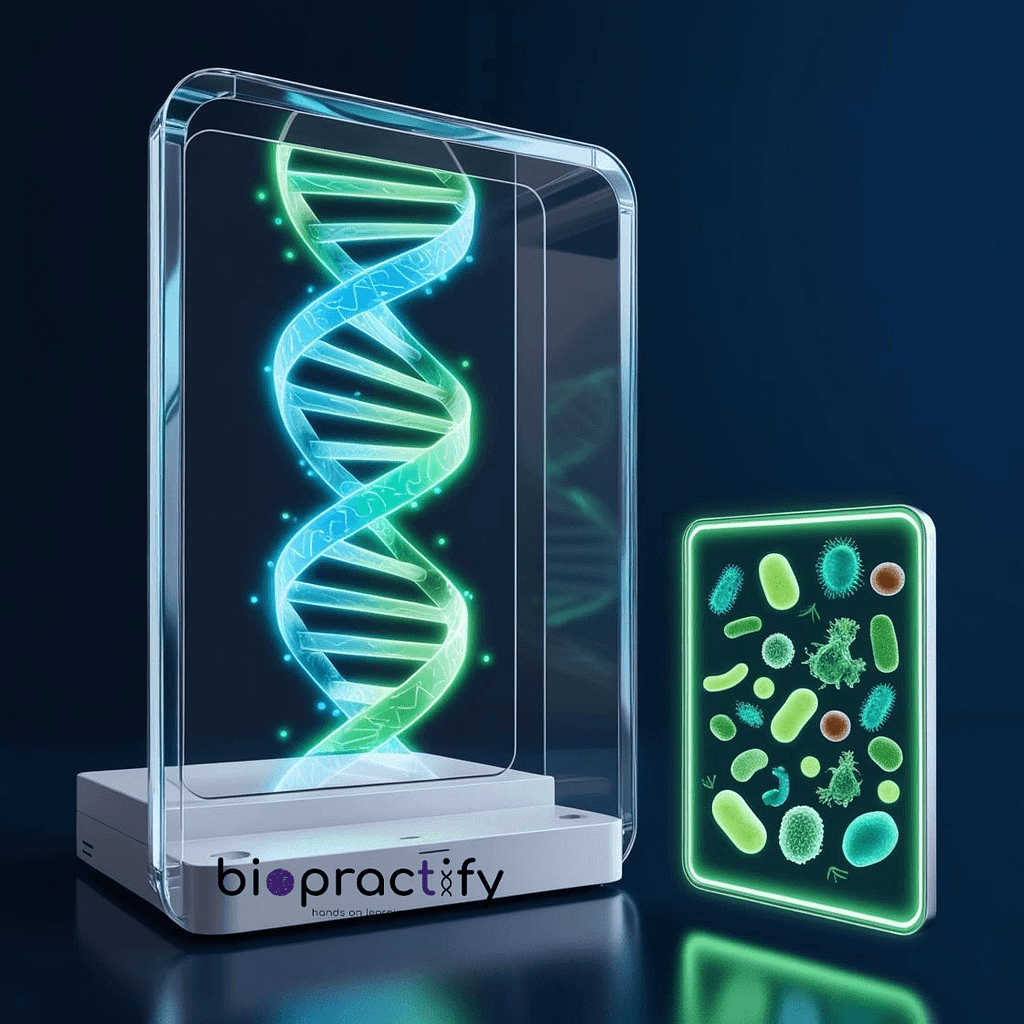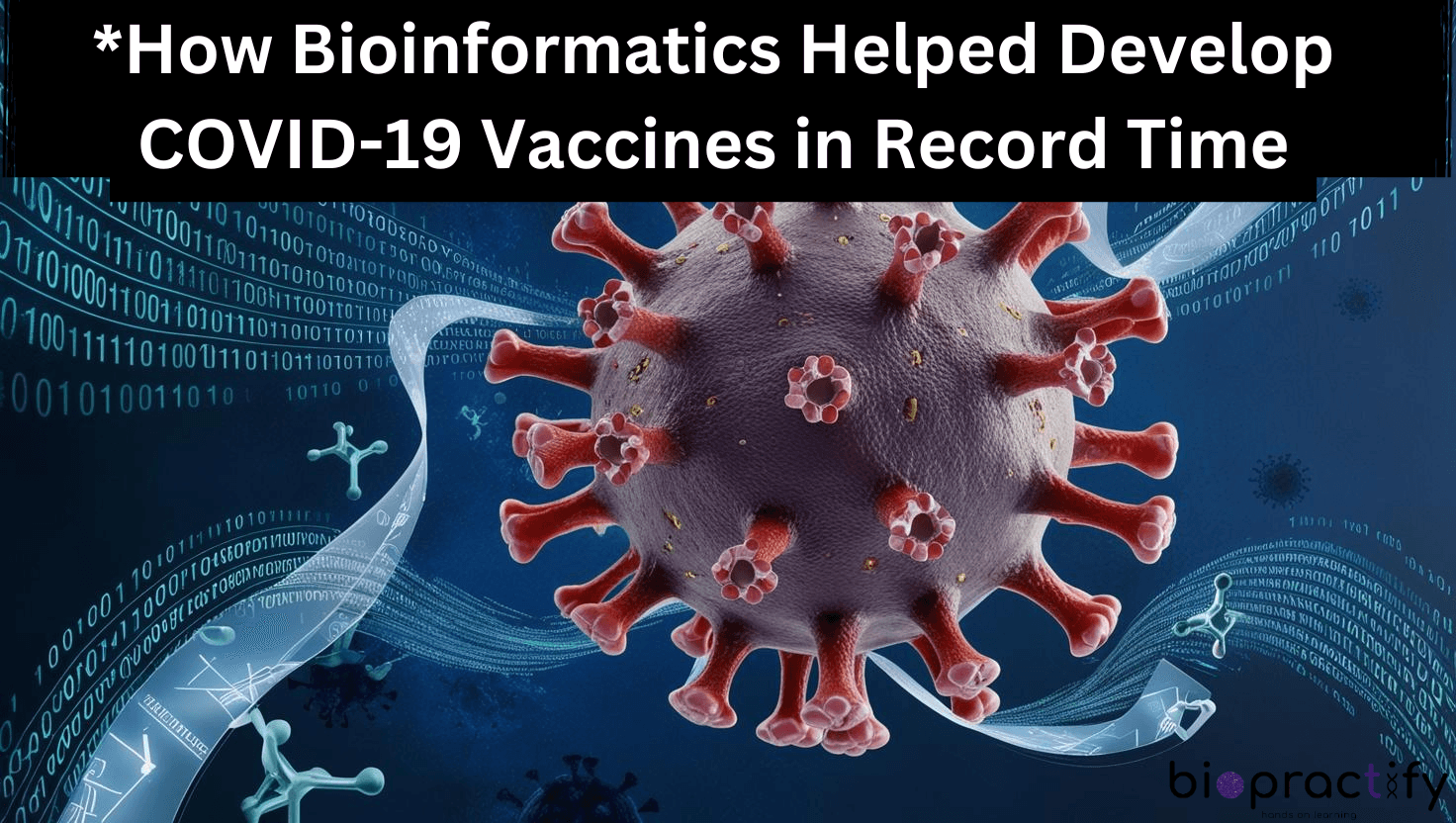Understanding the Role of Bioinformatics in COVID-19 Vaccine Development
The COVID-19 pandemic brought the world to a standstill, demanding an urgent response from the scientific community. One of the key players in the rapid development of vaccines was bioinformatics—a field that merges biology, computer science, and data analysis to study biological data. By using bioinformatics, researchers could quickly analyze the virus, understand its structure, and design vaccines in record time.

How Bioinformatics Accelerated Vaccine Research
Traditional vaccine development takes years, often over a decade. However, COVID-19 vaccines were developed and deployed within a year. This was possible because bioinformatics accelerated several key processes:
1. Rapid Virus Genome Sequencing
When the SARS-CoV-2 virus was first identified, scientists used bioinformatics tools to sequence its genome within weeks. This helped researchers understand the virus’s genetic code, allowing them to identify potential targets for vaccines.
2. Predicting Virus Mutations
Bioinformatics models analyzed how the virus could mutate over time. This was crucial in designing vaccines that could remain effective against different variants, such as Delta and Omicron.
3. Identifying Vaccine Targets
By studying the virus’s genetic structure, bioinformatics helped researchers identify the spike protein as the best target for vaccine development. This protein enables the virus to enter human cells, making it a prime candidate for vaccine strategies.
4. Designing mRNA Vaccines
Bioinformatics was instrumental in the development of mRNA vaccines like those from Pfizer-BioNTech and Moderna. Scientists used computational models to determine the safest and most effective way to instruct human cells to produce a harmless version of the spike protein, triggering an immune response.
Bioinformatics Tools Used in Vaccine Creation
Several bioinformatics tools and databases played a vital role in vaccine development:
1. NCBI and GISAID
These global databases stored SARS-CoV-2 genetic sequences, allowing scientists worldwide to access and analyze virus samples in real time.
2. AlphaFold
Developed by DeepMind, this tool predicted the 3D structure of the spike protein, helping researchers design more effective vaccines.
3. BLAST (Basic Local Alignment Search Tool)
This tool compared the virus’s genetic sequence with known viruses, identifying similarities that could guide vaccine design.
4. Molecular Docking Simulations
These simulations helped researchers test how different vaccine molecules interacted with the virus, speeding up the selection of effective vaccine candidates.
Future of Bioinformatics in Disease Prevention and Vaccine Development
The success of bioinformatics in COVID-19 vaccine development has set a precedent for future pandemics. Moving forward, we can expect:
- Faster vaccine development for emerging viruses.
- Personalized vaccines based on genetic data.
- Real-time tracking of virus mutations to update vaccines accordingly.
With advancements in bioinformatics, the world is better equipped to respond to future health crises swiftly and effectively. This field will continue to play a crucial role in saving lives and improving global health.
By leveraging bioinformatics, scientists developed COVID-19 vaccines at an unprecedented speed, proving the power of technology in modern healthcare. As research continues, bioinformatics will remain a game-changer in fighting infectious diseases worldwide.


Leave a Reply